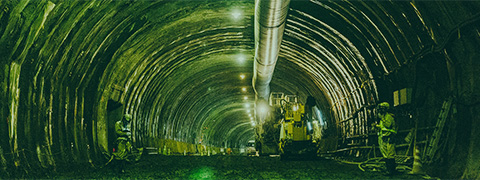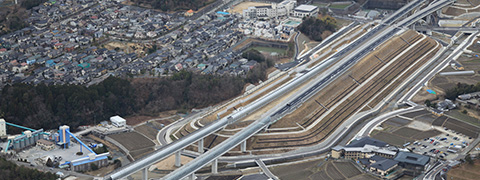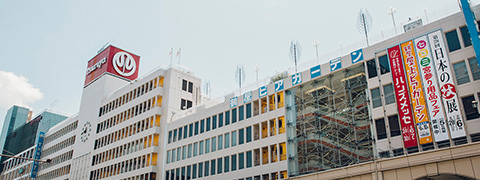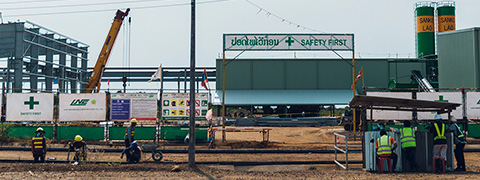
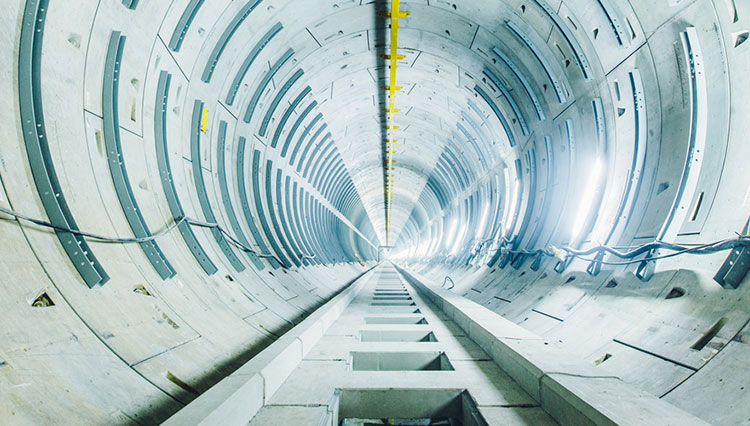
Changing the power supply in Singapore
Design and Construction of East-West Transmission Cable Tunnel EW3
Singapore continues to growly rapidly, attracting people and businesses from all over the world.
To meet anticipated rises in electric power demand, a 35-km tunnel for an ultra-high voltage power transmission cable is being constructed.
Nishimatsu Construction has been contracted to build one section of this tunnel. Workers at the construction site tackled large challenges while adapting to a multinational and multi-cultural environment that is incredibly diverse.
Design and Construction of East-West Transmission Cable Tunnel EW3
SP Power Assets Ltd.
October 8, 2012 to April 2, 2017
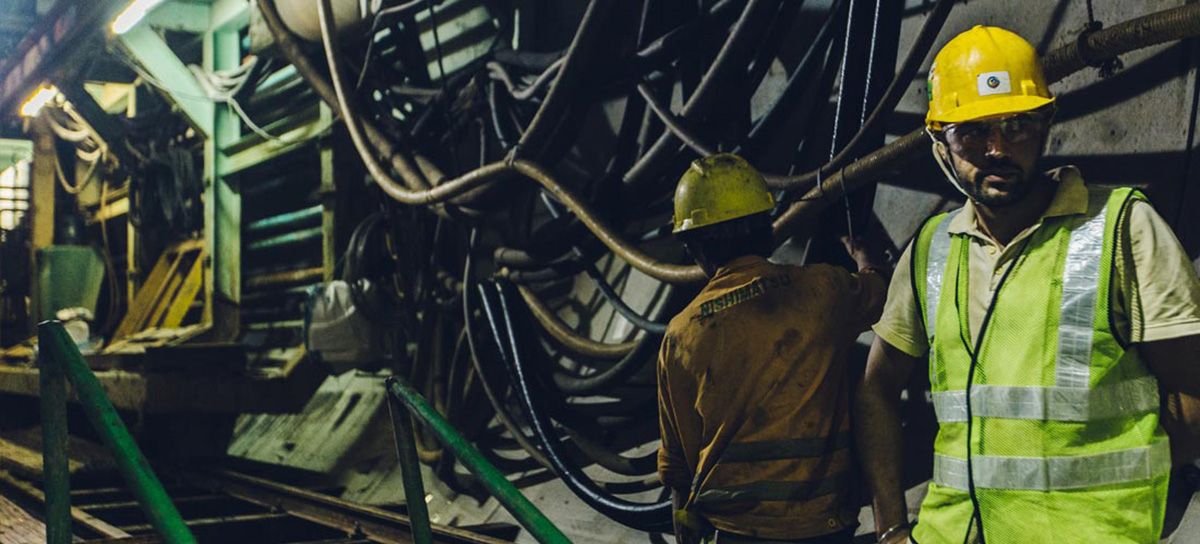
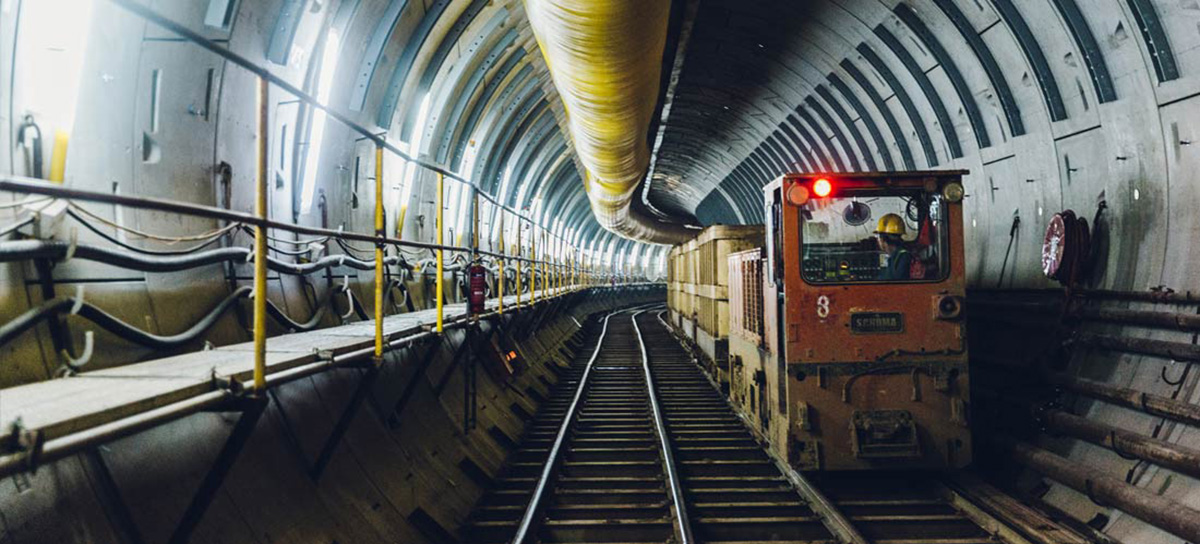
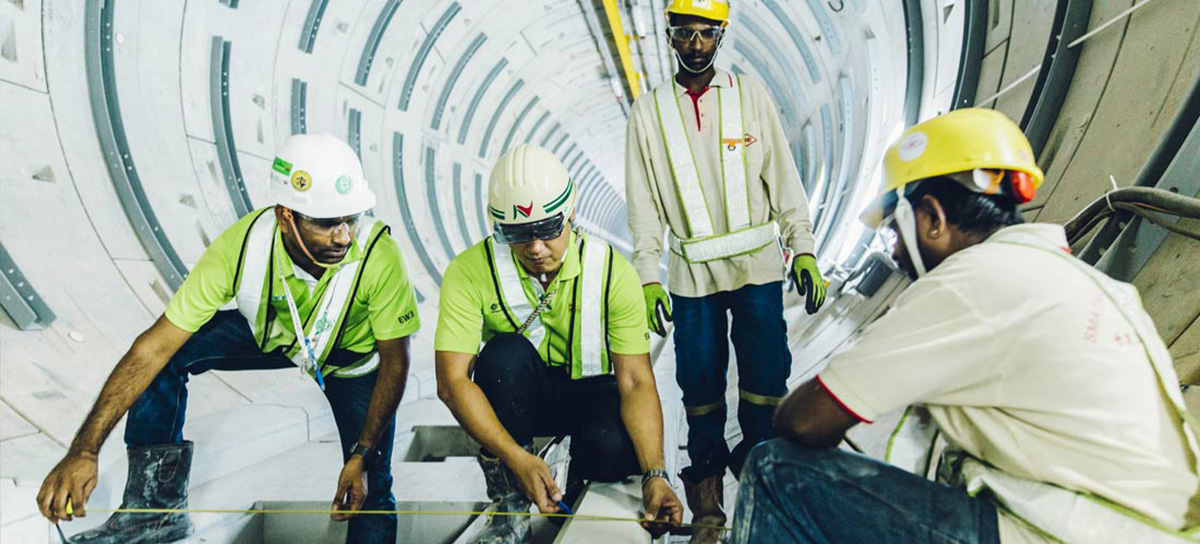
This major project will support the next generation of power supply infrastructure in Singapore.
SP Power Assets Ltd. is a company affiliated with Singapore Power that handles the management of facilities for power transmission. In preparation for future power demand, it invested a total project outlay of 2 billion Singapore dollars, equal to nearly 125 billion yen, to construct a tunnel for an ultra-high voltage transmission cable. The 35-km tunnel running beneath central Singapore will be constructed 35 m to 60 m underground and divided into six sections. Individual contracts were concluded for each section, with Nishimatsu Construction contracted to work on Section EW3. Over the course of a 54-month work period, we are to construct a 5.5 km tunnel section with a finished inner diameter of 6 m using two shield tunnel boring machines (TBMs). We are also responsible for constructing the accompanying facilities and mechanical and electrical facilities in the tunnel.
Traditionally, Singapore has relied on thin high voltage cables installed at a shallow depth below ground for its supply of power. These cables have deteriorated due to their age, with some of them exceeding their estimated service life of 40 years. This project is therefore essential for maintaining a safe and stable power supply. Completion of the tunnel will pave the way not only for the supply of power through new cables, but make it easier to maintain and replace cables in the future, thereby minimizing the adverse impact on people lives when maintenance work is performed. As a measure to address age deterioration, the project aims to ensure the quality for 120 years because the infrastructure being constructed is expected to play a significant role in the future. We are working responsibly on this project, which will support people’s lives and businesses in Singapore as well as the future of the country.
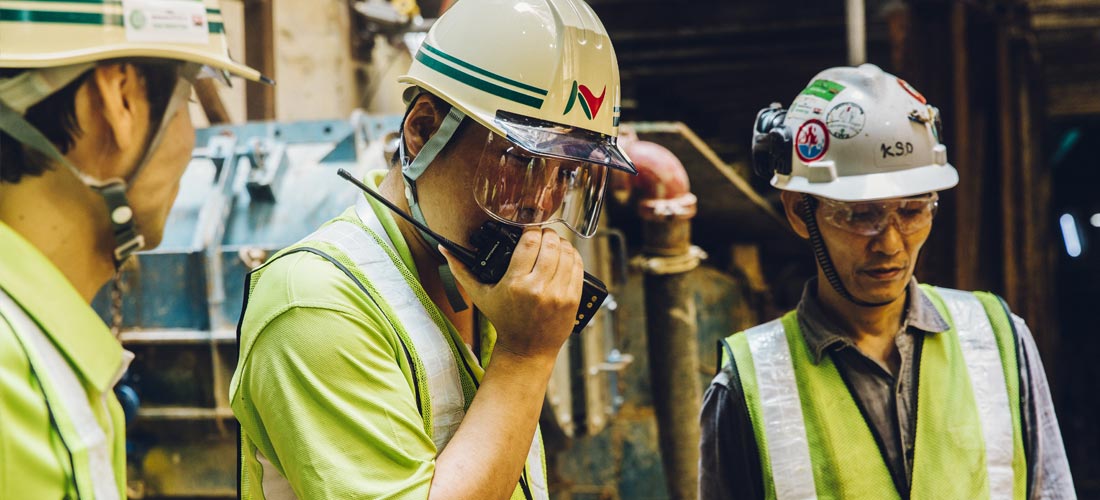
Two major challenges
“We faced several challenges in implementing this project” says Mr. Arimura, project director of this project. “In particular, there were two difficult challenges.” The first involved the need to operate two TBMs at the same time with the use of a small vertical shaft with an inner diameter of 14 meters. “If we had thought about the ease of work, we could have made the shaft larger. However, that would have led to a longer work period and a higher work cost. We made comparisons and explored optimal measures, and after closely examining several factors, we decided on a diameter of 14 meters. To make something good while observing the work period and budget, we need to do more to improve our own technologies.” The words of Mr. Arimura reflect the sense of responsibility and pride in planning from the client’s perspective and accomplishing the aims of the project.
The second challenge was to form a sharp curve with a radius of 75 meters (a R75 curve) using a TBM with an external diameter of 7 meters. Because this was the first case of making a R75 curve with this large-sized TBM in Singapore, there were reports that it was covered by local TV station Channel 8 and attracted considerable attention from local residents. The sharper the curve we form, the greater force that is applied to either side of the segment, and this corresponds to the outer side of the curve when the TBM turns. For these reasons, there is a need for a segment that offers greater strength than normal segments. “This R75 curve uses a special segment. It employs composite segments that have been reinforced by filling the outer steel shells with concrete. These kinds of segments are rarely seen in Japan. In fact, these are actually original segments designed for conditions in Singapore. Oftentimes in Singapore, the consolidated sandy soil in the alluvium is so hard that it wears down the TBM blades and, if we fail to pay close attention, they quickly become damaged and unserviceable. Work is conducted 60 meters underground and a pressure of 200 kilopascals is applied in the front direction when excavating. We carefully check the degree of wear on the blades, adjusting the digging parameters and replacing parts in order to operate the TBM at a high level of efficiency. Deciding on these factors is ultimately based on experience. The status can be estimated with parameters to a certain extent, but the addition of this experience ensures that the right decisions are made.” The use of accumulated experience in response to actual construction conditions, instead of relying solely on machinery and data, is a crucial facet of the construction management capabilities needed to overcome issues.
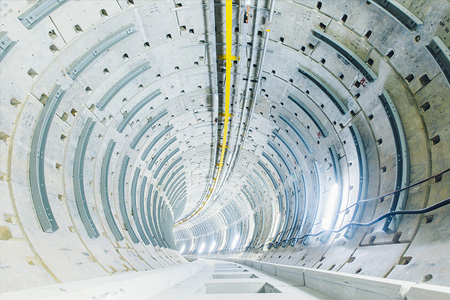
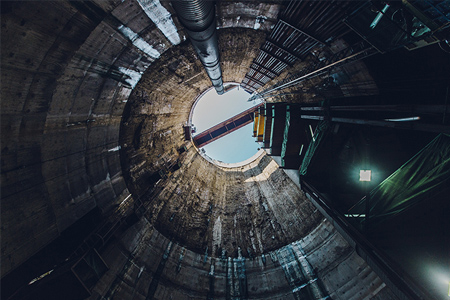
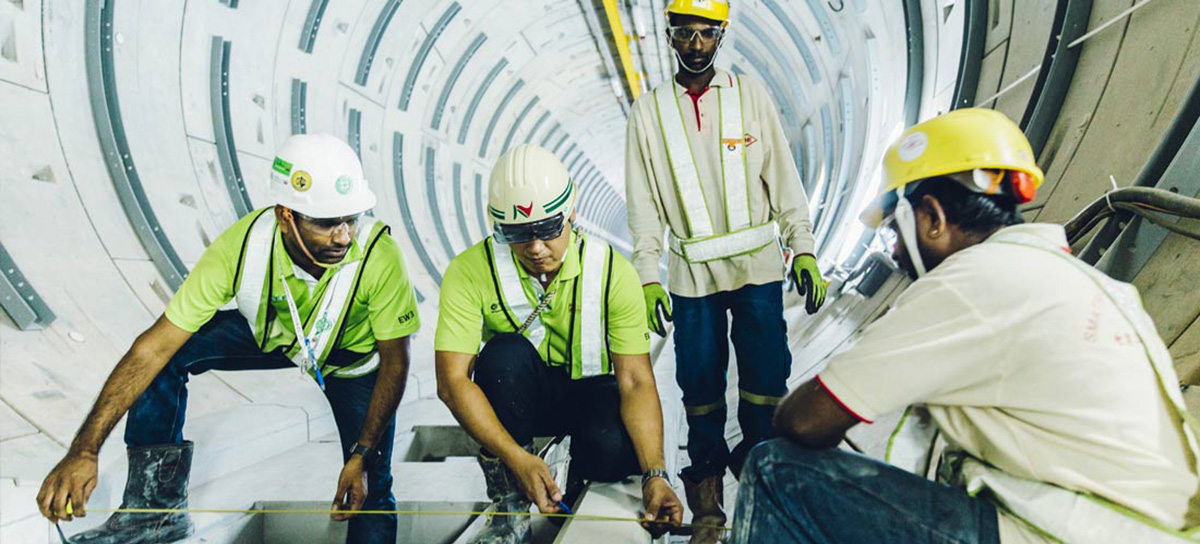
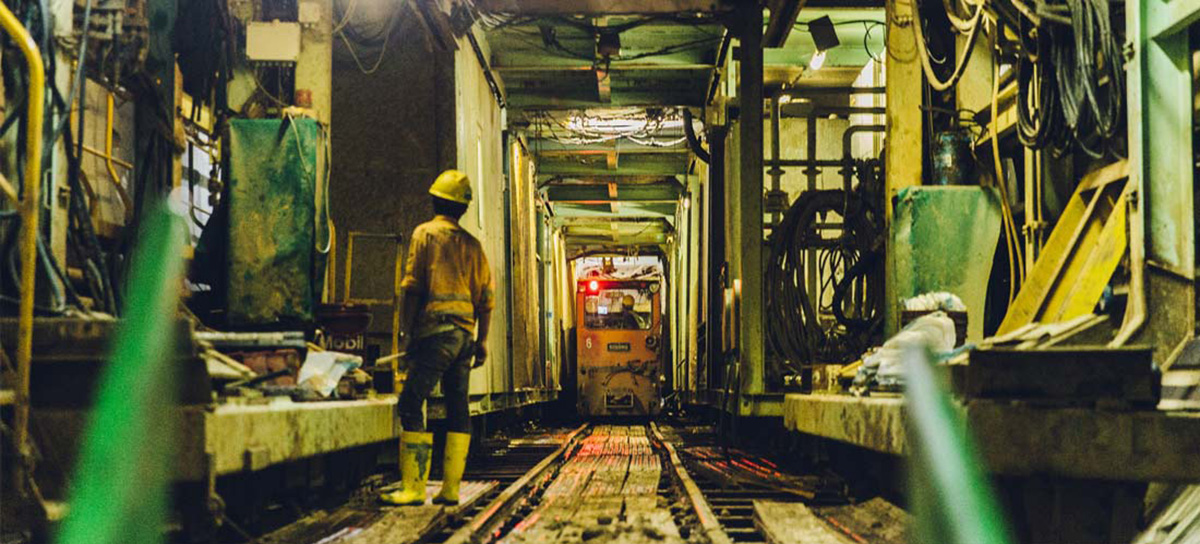
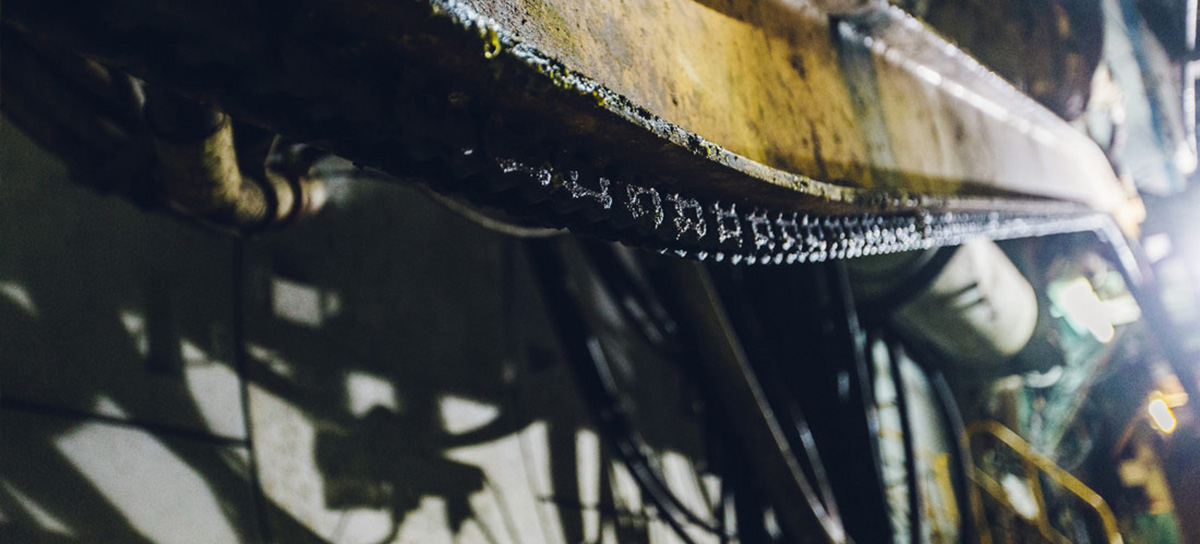
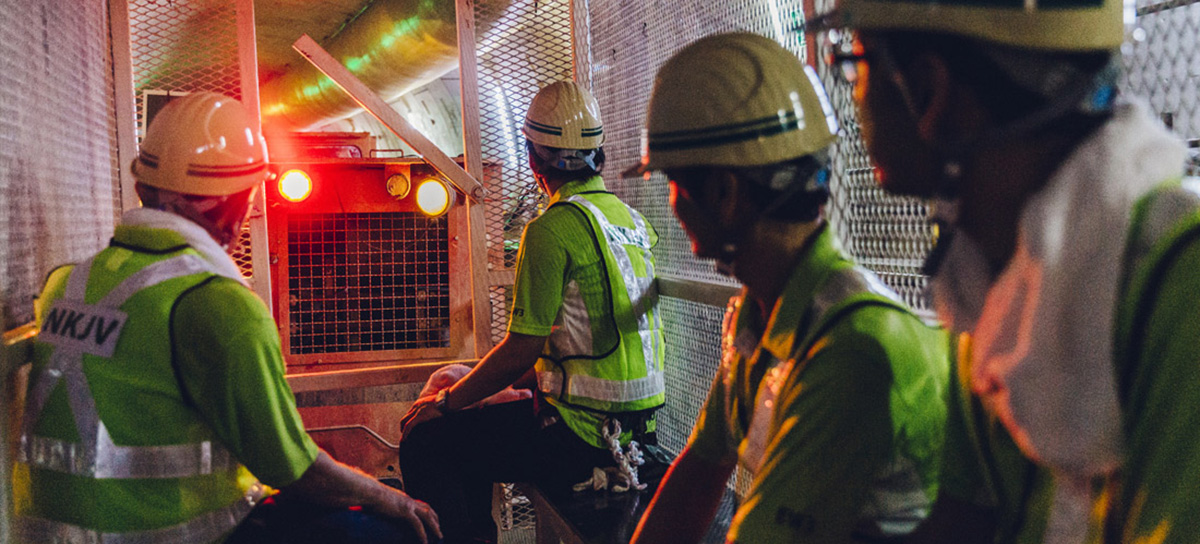
Team Nishimatsu stands together in tackling problems, with no walls standing between the construction site and office in Japan.
Naturally, not everything goes smoothly. When we began running the TBM during the initial stages of the project, we were troubled by cracks that are often generated in segments by the thrusting of the TBM. “There is a group inside Nishimatsu Construction called the Shield Tunneling Committee that specializes in managing tunnel construction work. The committee members based in Japan were asked to visit the site and work hard to come up with a solution. Experienced personnel in civil engineering and civil work design who have actually operated the shield machine at construction sites in Japan met with experts in other areas to discuss solutions and propose ideas from their own perspective. We continued speaking with the client until both sides were satisfied and then improved the segment design and tightened the construction management.” In improving the design, we also changed the position of the key segment, which is the final segment installed in the segment fitting process. In Singapore, the specifications often call for the key segment to not be placed in the lower half of the shield’s cross-section. However, this limitation on the position of the key segment not only poses an obstacle to the flexibility of the tunnel form, but also fails to effectively disperse the load on segments, leading to poorer durability. “The reason for this restriction stems largely from the client’s concern about how hard it is to assemble the lower part, and worry that the quality may suffer if the constructor lacks the necessary technical prowess. Technology today is more advanced than it was in the past, so we told the client that there was nothing to worry about because Nishimatsu’s tunneling technologies and experience would be used. This is the approach we took to speaking with the client and securing its consent to increase the number of positions where the key segment could be placed, such as those in the lower part. This enabled us to make a finer curve.” Through various measures such as these, we were able to eventually eliminate cracks and complete the R75 curve without any problems. To create high quality products, everyone in the company works together to sort out the problems involved in construction and holds repeated discussions with the client to obtain their cooperation and understanding. Our careful action in dealing with a one matter after another is the foundation for all our success.
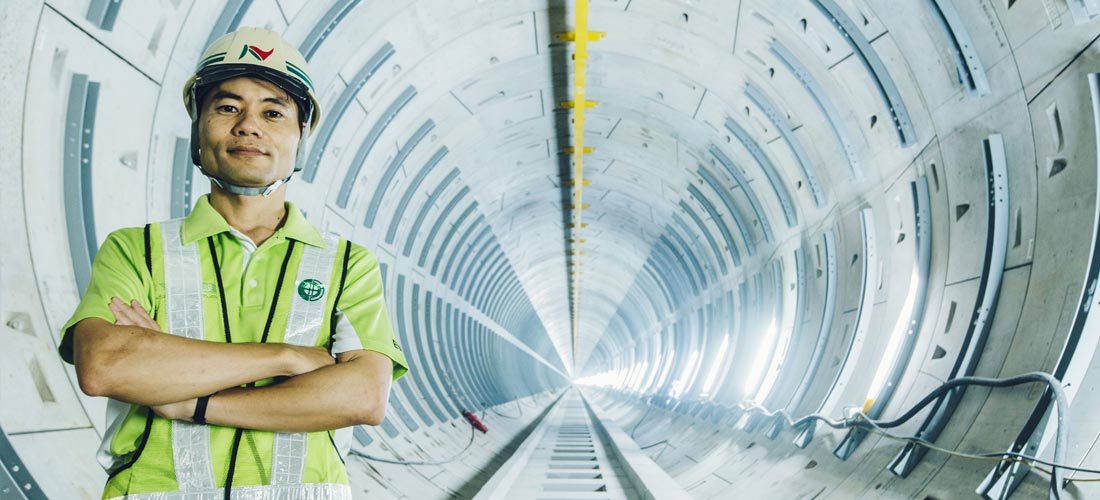
Approach to achieving objectives in a multi-national and -cultural environment
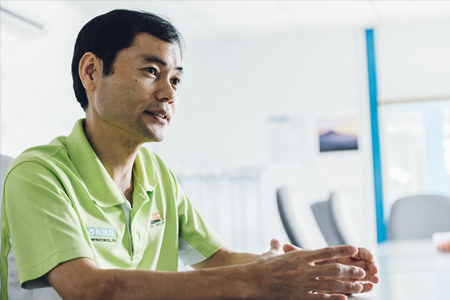
The chief characteristic of undertaking a project in Singapore is that it is carried out in a multinational and multi-cultural environment. Including Mr. Arimura, there are only five Japanese engineers at the project site. The other 55 staff members are all local hires. They come from Singapore, Malaysia, Indonesia, the Philippines, Myanmar, Thailand, India, Bangladesh, and other countries, and all have their own language and culture. The business culture in Singapore also requires that we communicate with Chinese and Korean contractors American consulting firms and European manufacturers. “The greatest difference from Japan is that a lack of respect for your partner’s culture hampers business in a multi-cultural environment. It is not confined to a matter of language. Even if the language is understood, difference in culture leads to different ways of thinking, and everyone has their own view on the notion of common sense. A majority of the workers in Singapore are migrant workers from other countries and many of them have no experience of working in the construction industry. Management cannot be implemented in the same way as it is in Japan. Here we in Singapore, we must adapt everything we do to fit the nature of the country and workers,” says Mr. Arimura. However, he was full of energy, looking as if he enjoyed the challenges this environment posed.
Assisting Mr. Arimura with the project at the position closest to him in rank, Mr. Keng, deputy project director of this project, is a local hire from Malaysia. “I feel my main task is to follow the directions of Mr. Arimura. However, instead of just doing what he says, I normally prefer to just contribute as a member of the team so that swift action can be taken whenever a problem occurs. This project is being carried out by a number of people with different backgrounds working together, so communication is really important,” says Mr. Keng. “For example, I always stay in the room on the first floor of the office where workers gather for an hour in the morning. I ask them how things went the previous day and if they are facing any problem. I place importance on speaking directly with workers and hearing what they have to say. When something happens, I receive reports from engineers and section leaders, but it is important to talk with the workers at the construction site to make sure these reports are accurate. We are just a little away from completion of the construction. We want to see this project out together as a team.” His relationship with Mr. Arimura clearly shows how a common goal can transcend linguistic and cultural barriers.

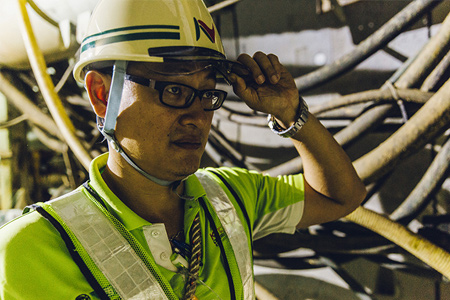
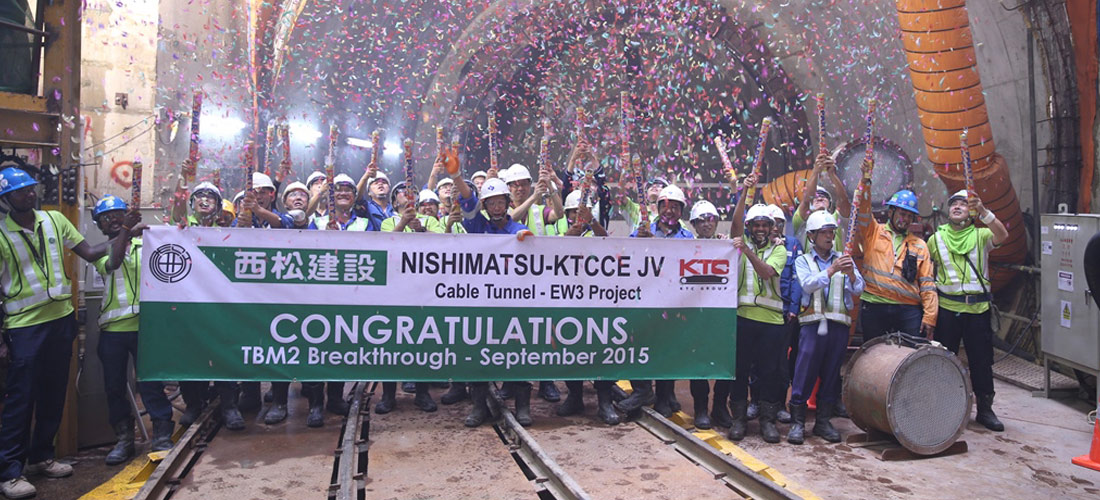
Ensuring that Nishimatsu Construction remains competitive in its operations overseas
Over the last 50 years, Nishimatsu Construction has gained different kinds of experience outside Japan. This experience enables us to overcome individual difficulties unique to the conditions we encounter in other countries and to actively move forward to tackle other projects outside Japan. Mr. Arimura himself has many years of experience doing construction work outside Japan. “I believe that Nishimatsu Construction’s experience in many different countries is a huge advantage when it comes to the hands-on work at different sites. Cutting-edge technologies and systems brought from Japan will not work on site because each country has its own rules and problems. Doing work in another country is difficult if the company is not prepared to offer fully systematized support and be capable of responding flexibly. This foundation pens the way for relationships with the local client and related institutions.” He believes that the company’s experience is quite significant in addressing the difficulty of implementing a project in an overseas environment.
“Our own experience and that of our predecessors, and colleagues is what enables us to do work in Singapore. Rather than merely accumulating experience, we also need to cultivate it at each construction site. If we fail to do that,” he says sternly, “then our experience is wasted.” He adds that “tunneling is one of Nishimatsu Construction’s strengths, and our tunneling technologies are truly unrivalled. That is something I can say with confidence.” He continues, “We are more than happy to go to other countries and construct basic infrastructure. The daily increases in the completed length of the tunnel, only adds to our joy. As a colleague, I am proud to see Nishimatsu staff involved in projects in different countries.” There have been no accidents for more than 2.5 million hours on this project. The tunnel has reached the adjoining area and there is just a short distance left until we are done with excavating. The remaining equipment work is nearing the final phase. We continue to apply our hands-on capabilities to transcend linguistic and cultural boundaries and ensure the next-generation of power supply infrastructure in Singapore.






